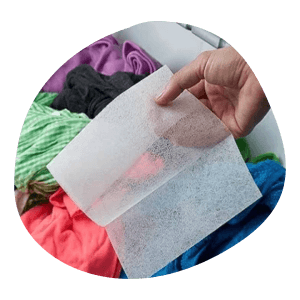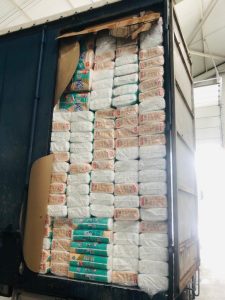Quality Standards in Wet Wipe Production
When it comes to personal care and hygiene products, quality standards in wet wipe production play a pivotal role in customer satisfaction and safety. Wet wipes are used daily by millions around the globe — from newborns to adults — making it crucial that their production meets rigorous standards to guarantee effectiveness, safety, and comfort.
This article dives deep into what defines quality in wet wipe manufacturing, the common tests applied during production, and answers to some of the most frequent questions consumers and professionals ask. Whether you’re a manufacturer, supplier, or an informed consumer, understanding these quality benchmarks helps you appreciate the value of high-standard wet wipes.

Quality Standards for Wet Wipes?
The foundation of any premium wet wipe product lies in the quality standards in wet wipe production. These standards dictate how raw materials are selected, how production processes are controlled, and how the final product is evaluated to ensure it meets both regulatory and consumer expectations.
In general, the following quality parameters are critical for wet wipes:
- Material Safety: The fabric must be non-toxic, hypoallergenic, and soft enough for sensitive skin.
- Moisture Content: The wetness level should be balanced to provide effectiveness without dripping.
- pH Balance: To prevent irritation, the wipe’s solution should be skin-friendly, typically between pH 4.5 and 7.
- Microbial Control: The product must be free from harmful bacteria and fungi, ensuring it is sterile or preserved properly.
- Durability and Strength: Wipes should be strong enough to avoid tearing during use.
- Fragrance and Sensitivity: Fragrances, if any, should be mild and dermatologically tested to avoid allergic reactions.
- Packaging Integrity: Packaging must preserve moisture and prevent contamination.
International organizations like the FDA, ISO, and various cosmetic regulatory bodies provide detailed guidelines to maintain these standards. Manufacturers often implement Good Manufacturing Practices (GMP) to align with these protocols.

Essential Elements in Quality Control
To maintain high standards, quality control begins at raw material sourcing and continues throughout the production line. This process includes testing the raw fabric, the chemical solution, and the final packaged product. Documenting and monitoring these parameters ensures consistency and safety.
Common Quality Control Tests in Wet Wipe Production
Practical and scientific testing makes quality standards in wet wipe production tangible and measurable. Some common quality control tests include:
| Test Name | Purpose | Method | Frequency |
|---|---|---|---|
| Material Strength Test | Checks tear resistance and tensile strength | Use tensile testers to apply controlled force until breakage | Every batch |
| Microbial Contamination Test | Ensures absence of harmful microorganisms | Culture swabs from wipes in lab media, incubate and observe growth | Daily or batch-wise |
| Moisture Content Test | Measures liquid content ensuring proper wetness | Weight difference before and after drying in an oven | Each production lot |
| pH Level Test | Confirms the solution’s skin compatibility | pH meter measurement of wipe solution extract | Each batch |
| Packaging Seal Integrity | Prevents leakage and contamination | Visual inspection and vacuum or pressure testing | Every pack line run |
| Fragrance and Sensitivity Testing | Ensures hypoallergenic and pleasant user experience | Patch tests on volunteers or dermatological panels | New formulations |
These tests ensure that wet wipes provide the expected performance while safeguarding user health. Notably, microbial testing remains one of the most critical to prevent contamination that could cause infections or skin reactions.
How Manufacturers Maintain Consistency
Quality consistency arises from standardized procedures and employee training. Process control charts and statistical analysis help detect deviations early. Moreover, third-party audits add a layer of assurance that production respects quality standards in wet wipe production throughout the supply chain.
Voices from the Field: Questions People Ask About Wet Wipe Quality
When it comes to wet wipes, many people have questions. Here are some common inquiries that reflect everyday concerns and curiosity around quality:
Q: How do I know if a wet wipe is safe for sensitive skin?
A: Check the product label for terms like “dermatologically tested,” “hypoallergenic,” and “fragrance-free.” The pH level also matters; wipes with a skin-friendly pH (around 5-7) are gentler. Reputable manufacturers adhering to strict quality standards usually disclose such information.
Q: Why do some wet wipes feel too wet or too dry?
A: This depends on the moisture content controlled during production. Too much liquid can make wipes drip, while too little reduces effectiveness. Strict quality control ensures that moisture stays balanced for optimal use.
Q: Can wet wipes cause allergies or infections?
A: If wet wipes fail microbial tests or contain irritating chemicals, they may cause skin problems. Following quality standards in wet wipe production prevents contamination and ensures safe ingredients, minimizing risk.
Q: What happens if the packaging is damaged?
A: Damaged packaging can lead to moisture loss or contamination, compromising wipe quality. Always check the seal before use and store wipes properly to maintain their integrity.
Wrapping It Up
Understanding quality standards in wet wipe production unveils the detailed care and precision behind a product many take for granted. From selecting safe materials to rigorous quality control tests, every step is designed to deliver a product that’s effective, safe, and pleasant to use.
Manufacturers who prioritize these standards build trust with consumers and uphold the reputation of their brands. As consumers, awareness about these quality benchmarks empowers smarter choices for health and hygiene.
Frequently Asked Questions
What raw materials are commonly used in wet wipe production?
Typically, nonwoven fabrics made from viscose, polyester, or polypropylene are used. These materials provide softness, strength, and biodegradability depending on the type of wipe.
How often should wet wipe manufacturers perform microbial testing?
Microbial testing is usually conducted on every batch or daily during production runs to ensure no contamination occurs.
Are there environmental standards related to wet wipe production?
Yes, many manufacturers comply with environmental regulations targeting biodegradability, wastewater treatment, and reduction of harmful chemicals to minimize ecological impact.
How do preservatives in wet wipes affect quality?
Preservatives prevent microbial growth and extend shelf life but must be used in safe concentrations to avoid irritation or allergies.

